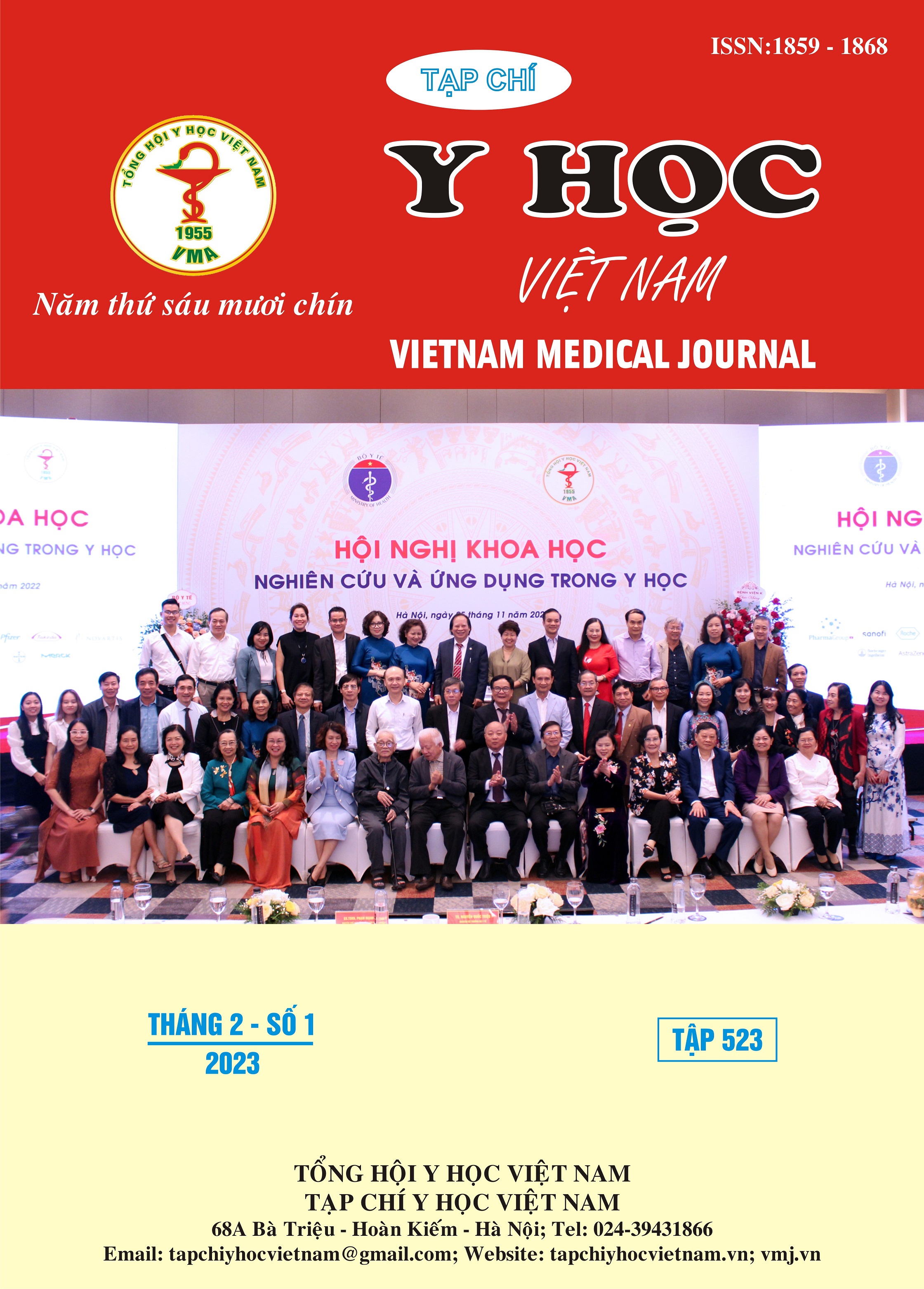URINARY TRACT INFECTION AND ANTIBIOTIC RESISTANCE AT KIEN GIANG PROVINCIAL GENERAL HOSPITAL IN 2021
Main Article Content
Abstract
Background: Urinary tract infection is one of the infectious diseases caused by bacteria, accounting for a significantly high incidence of hospital-acquired infections. Monitoring for early detection and prevention of UTIs is very important for clinicians for effective diagnosis and treatment. Objectives: To survey bacteria causing urinary tract infections, to determine the level of antibiotic resistance of each isolated bacterial strain. Methods: A cross-sectional descriptive study of inpatients with a clinical diagnosis of urinary tract infection, assigned to a positive urine culture (>100,000 bacteria/mL) and performed antibiotic chart. Results: E. coli had the highest rate of 54.5%, followed by K. pneumoniae 15.6%, Pseudomonas spp 9.9%, Enterococcus faecalis 6.0%. Regarding the rate of antibiotic resistance, E. coli has a high rate of resistance to Cefazolin (100%), Ampicillin (97.9%), and Ciprofloxacin (91.7%). K. pneumoniae was quite resistant to Ampicillin, Cefazolin (100%), Ciprofloxacin (96.4%), Ampicillin/sulbactam (92.7%), Ceftazidime (90.9%). Pseudomonas spp has a high rate of resistance to Nitrofurantoin (91.2%), Ceftazidime, Ciprofloxacin (88.6%), Meropenem (85.7%). Enterococcus faecalis was resistant to Tetracycline (81.0%), Levofloxacin (71.4%), and resistance to Vancomycin, Nitrofurantoin, and Linezolid has not been detected. Staphylococcus spp has antibiotic resistance rate with Ampicillin, Penicillin G (100%), Gentamicin (90%), Oxacillin (80%), Ciprofloxacin (70%), resistance to Nitrofurantoin, Vancomycin has not been detected. Conclusion: E. coli is the most common cause of urinary tract infections. Antibiotic resistance of bacteria is increasing in hospitals.
Article Details
Keywords
Urinary tract infection, Antibiotic resistance, Kien Giang provincial general hospital
References
2. Lê Đình Khánh, Lê Đình Đạm, Nguyễn Khoa Hùng, Nguyễn Xuân Mỹ, Võ Minh Nhật, Nguyễn Ngọc Minh, Sương Hồ Thị Ngọc (2018), "Tình hình nhiễm khuẩn đường tiết niệu tại khoa ngoại tiết niệu bệnh viện Trường Đại học Y dược Huế". Tạp chí Y dược học - Trường Đại học Y dược Huế, Tập 8, số 3 - tháng 6/2018, 100-108.
3. Cao Minh Nga (2010), "Sự đề kháng kháng sinh của các vi khuẩn gây nhiễm khuẩn đường tiết niệu ở người lớn". Tạp chí Y học TP Hồ Chí Minh, tập 44, số 1, tr 490 – 496
4. Trần Thị Thanh Nga (2013), "Tác nhân gây nhiễm trùng tiểu và tình hình đề kháng kháng sinh tại bệnh viện Chợ Rẫy 2013". Tạp chí Y học TP Hồ Chí Minh, Tập 18, Phụ bản của Số 4, 2014, 119-122.
5. Nguyễn Thị Thanh Tâm, Hương Trần Thị Bích (2015), "Đặc điểm lâm sàng và vi trùng học của nhiễm khuẩn đường tiết niệu phức tạp ở người trưởng thành tại bệnh viện Chợ Rẫy". Tạp chí Y học TP. Hồ Chí Minh, 19(4):458-464
6. Trần Thị Thủy Trinh, Côn Bùi Mạnh (2015), "Đề kháng kháng sinh của các tác nhân gây nhiễm khuẩn đường tiết niệu tại bệnh viện An Bình năm 2015". Tạp chí Y học TP. Hồ Chí Minh, Phụ Bản Tập 20 * Số 5 * 2016
7. Huỳnh Minh Tuấn, Trần Xuân Sáng, Nguyễn Kim Huyền, Nguyễn Vũ Hoàng Yến, Trịnh Thị Thoa, Vương Minh Nguyệt, Bảo Nguyễn Thanh (2013), "Khảo sát phổ vi khuẩn gây nhiễm trùng tiểu và phổ đề kháng kháng sinh của chúng trên bệnh nhân đến khám và điều trị tại bệnh viện Đại học Y dược thành phố Hồ Chí Minh". Tạp chí Y học TP Hồ Chí Minh, Tập 19 * Phụ bản của Số 1 * 2015
8. Ganesh R., Shrestha D., Bhattachan B., Rai G. (2019), "Epidemiology of urinary tract infection and antimicrobial resistance in a pediatric hospital in Nepal". BMC Infect Dis, 19 (1), 420.


